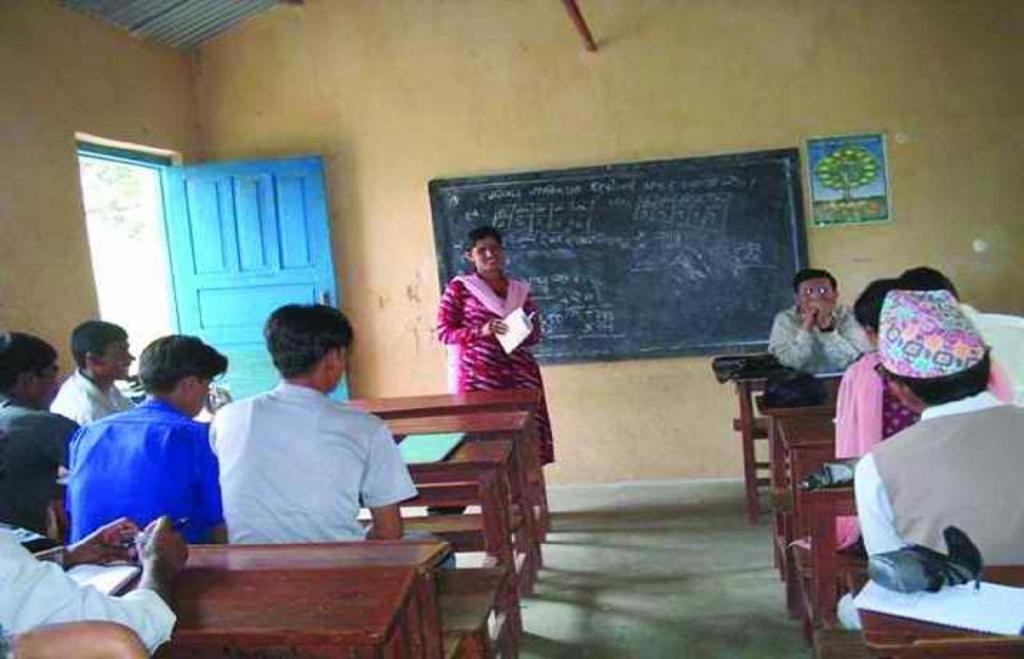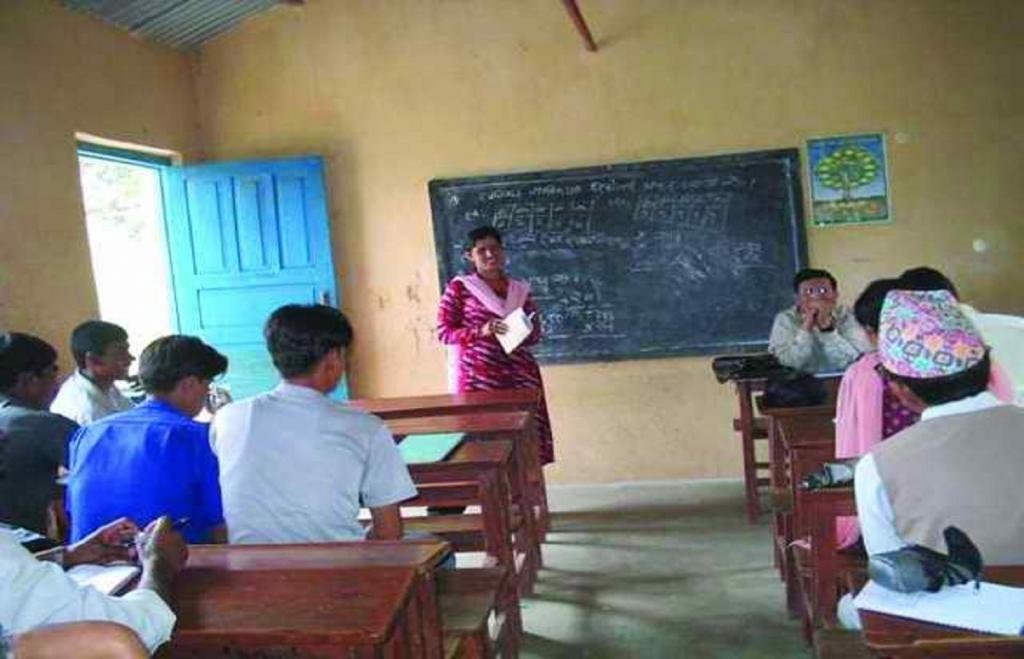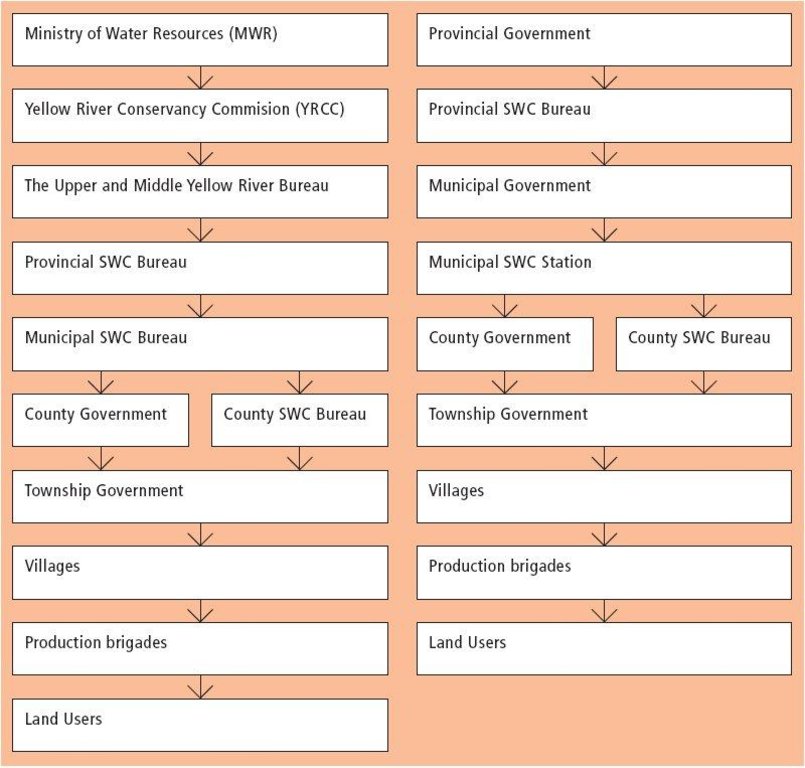Terrace approach [中国]
- 创建:
- 更新:
- 编制者: Yaolin Wang
- 编辑者: –
- 审查者: Laura Ebneter, Deborah Niggli
approaches_2399 - 中国
查看章节
全部展开 全部收起1. 一般信息
1.2 参与方法评估和文件编制的资源人员和机构的联系方式
SLM专业人员:
土地使用者:
SLM专业人员:
SLM专业人员:
有助于对方法进行记录/评估的项目名称(如相关)
Book project: where the land is greener - Case Studies and Analysis of Soil and Water Conservation Initiatives Worldwide (where the land is greener)有助于对方法进行记录/评估的机构名称(如相关)
Department of Resources and Environmental Science, Beijing Normal University (Department of Resources and Environmental Science, Beijing Normal University) - 中国有助于对方法进行记录/评估的机构名称(如相关)
ISRIC World Soil Information (ISRIC World Soil Information) - 荷兰有助于对方法进行记录/评估的机构名称(如相关)
GEF/OP12 Gansu Project (GEF/OP12 Gansu Project) - 中国1.3 关于使用通过WOCAT记录的数据的条件
编制者和关键资源人员接受有关使用通过WOCAT记录数据的条件。:
是
1.4 SLM技术问卷的参考
2. SLM方法的描述
2.1 该方法的简要说明
Highly organised campaign to assist land users in creating terraces: support and planning from national down to local level.
2.2 该方法的详细说明
该方法的详细说明:
Before 1964, the slopes on China's Loess Plateau were cultivated up and down by machinery. Consequently soil and water were lost at high rates, and fertility and yields declined. Accessibility to cultivated land became more and more difficult due to dissection by gullies. The first terraces were established by self-mobilisation of the local land users. However there was no standard design. Furthermore, as the individual plots were very small and scattered all over the village land, terracing needed better coordination. Between 1964 and 1978, the local government at the county level took the initiative of organising farmers and planning terrace implementation according to specific technical design on a larger scale. At that time the land was still communally managed by production brigades. Through mass mobilisation campaigns people from several villages were organised to collectively terrace the land - village by village - covering around 2,000 hectares each year. Labour was unpaid.The Yellow River Conservancy Commission (YRCC) came into being in 1948 - and the Upper and Middle Yellow River Bureau in 1977. This gave greater impetus to the implementation of SWC in the Loess Plateau. After 1978, land use rights were allocated to individuals (though official ownership was still vested in the state). SWC specialists and county level SWC bureaus started to work with groups of farmers who had land use rights within a given area. Survey and design were carried out. The farmers organised themselves, consolidated the parcels of land, and then after the conservation work was done they redistributed the terraced fields.
In the 1980s the government started to financially support land users involved in SWC projects. Subsidies ranged from (approx.) US$* 20/ha in projects at county level, to US$* 55/ha for national projects (eg through the Yellow River Commission), and up to US$* 935/ha when World Bank projects were involved - as in the recent past. Implements were provided by the farmers themselves. Then, in 1988 a nationwide project in SWC - which originally was proposed at county level - was approved by the national government. Furthermore, in 1991 a national law on SWC came into force. Protection of the Yellow River and associated dams became a priority at regional and national levels. In total, within Zhuanglang County, 60 SWC specialists/extensionists cover an area of 1,550 km2, and most of the terraces were built with low levels of subsidies. Annual plans about implementation of new SWC measures were made during summer. Small areas were planned at village or township level, whereas bigger areas (> 7 hectares) were designed at county level. Implementation then took place during winter. Terracing was implemented first where access was easiest and closest to settlements, and only later, further away. * exchange rate: 1 US$ = 8 Chinese Yuan (May 2006).
2.3 该方法的照片
2.5 采用该方法的国家/地区/地点
国家:
中国
区域/州/省:
Gansu Province, Loess Plateau Region
Map
×2.6 该方法的开始和终止日期
注明开始年份:
1964
2.7 方法的类型
- 基于项目/方案
2.8 该方法的主要目的/目标
Aims of the approach are: - water conservation (this is a semi-arid area), - soil conservation: reduce soil loss on the sloping and erosion-prone land of loess plateau, - enhancing soil fertility, and consequently production, - improve people's living conditions, These primary objectives were to be achieved by building level bench terraces on a large scale through a structured and organised campaign. Finally at the national level, a fourth aim was added: the protection of the Yellow river (avoiding floods and reducing the sediment load)
The SLM Approach addressed the following problems: - lack of organisation, capital and technical knowledge in farmer communities to counter the underlying problems of water loss, soil loss, fertility decline and downstream effects on the Yellow River (floods and sediment) at catchment level, - absence or poor maintenance of erosion control measures
2.9 推动或妨碍实施本办法所适用的技术的条件
财务资源和服务的可用性/可得性
- 阻碍
Initially farmers were not paid and as they had no immediate benefit from, or security over, the use of the land. The investment in construction was a heavy burden on poor farmers.
Treatment through the SLM Approach: After 1988, labour inputs by farmers started to be partly covered by subsidies provided by local and national government
法律框架(土地使用权、土地和水使用权)
- 阻碍
Land users leased the land from the state and land users??? rights were insecure in the long term. Investments in SWC were not encouraged.
Treatment through the SLM Approach: National government persuaded land users to implement terraces by 'selling' the benefits (increased yield and easier workability of the land). After 1978, individual user rights motivated farmers to invest in SWC.
The existing land ownership, land use rights / water rights hindered a little the approach implementation Ownership of land and its resources belongs to state and communities: land users only lease the land for a period of time. Due to uncertainty over future user rights and possible reallocation in response to changes in population and household needs, additional investments into measures may be hindered. 1978 a first major change took place by allocating some individual land use rights.
了解SLM,获得技术支持
- 阻碍
Poor knowledge of how to reduce water loss, soil loss and fertility loss. Technical solutions were needed at the catchment level, involving the whole population.
Treatment through the SLM Approach: Enhanced guidance by SWC specialists.
3. 相关利益相关者的参与和角色
3.1 该方法涉及的利益相关者及其职责
- 当地土地使用者/当地社区
- 国家政府(规划者、决策者)
3.2 当地土地使用者/当地社区参与该方法的不同阶段
| 当地土地使用者/当地社区的参与 | 指定参与人员并描述活动 | |
|---|---|---|
| 启动/动机 | 互动 | Land users started implementing terraces but SWC specialists at the country level assisted in designing standards for terrace construction and township governments and production brigades organised whole villages and watersheds |
| 计划 | 被动 | Being consulted in the planning phase. Experienced peasants may be involved in introducing the local situation. |
| 实施 | 互动 | Major organisation done through the SWC bureau specialists with the village organisation including land users. Land users were actively involved in implementation. |
| 监测/评估 | 无 | reporting; No participation of land users |
| Research | 无 | on-station; No participation of land users |
3.3 流程图(如可用)
具体说明:
Terrace construction supported by projects from MWR, YRCC and international organisations (left) and terrace construction supported by provincial funds (right).
3.4 有关SLM技术选择的决策
具体说明谁有权决定选择要实施的技术:
- 主要是SLM专家,咨询土地使用者之后
解释:
Decisions on the method of implementing the SLM Technology were made by by politicians / leaders. Decisions are made by politicians/SWC specialists; land users are consulted in the planning phase (experienced farmers may be involved initially).
4. 技术支持、能力建设和知识管理
4.1 能力建设/培训
是否为土地使用者/其他利益相关者提供培训?:
是
明确受训人员:
- 土地使用者
培训形式:
- 在职
- 农民对农民
- 示范区域
- 课程
涵盖的主题:
Until 1978 the 'pyramid system' was used: the county level trained the township level, which trained the village level, which in turn trained the production brigades/farmers, who then trained other production brigades and farmers.
4.2 咨询服务
土地使用者有权使用咨询服务吗?:
是
指明是否提供了咨询服务:
- 在土地使用者的土地上
说明/注释:
Key elements: Pyramid system is also used for extension. At each government level (county, district and provincial levels) there is a SWC division in charge of SWC activities includ. extension (farm visits)
4.3 机构强化(组织发展)
是否通过这种方法建立或加强了机构?:
- 是,适度
具体说明机构的强化或建立程度:
- 本地
具体说明支持类型:
- 财务
4.4 监测和评估
监测和评估是该方法的一部分吗?:
是
注释:
bio-physical aspects were regular monitored through measurements; indicators: runoff loss, sediment load, soil moisture
technical aspects were regular monitored through measurements; indicators: structure of terraced areas, slope of risers, levelness of terrace surface
socio-cultural aspects were ad hoc monitored through observations; indicators: land users' perceptions of terraces
economic / production aspects were regular monitored through measurements; indicators: yield, income of land users
area treated aspects were regular monitored through measurements; indicators: terraced area
land users involved aspects were ad hoc monitored through measurements; indicators: number of farmers directly involved in terracing and farmers benefited directly
management of Approach aspects were ad hoc monitored through observations; indicators: number of small watersheds terraced
There were changes in the Approach as a result of monitoring and evaluation: The approach changed fundamentally from self-mobilisation to organised mass movements guided by the government.
4.5 研究
研究是该方法的一部分吗?
是
明确话题:
- 经济/市场营销
- 生态学
- 技术
提供进一步的细节,并指出是谁做的研究:
carried out at the provincial and national levels, mostly by technical staff. Land users have not been involved. Terrace building is based on scientific design, according to local conditions.
Research was carried out on station
5. 融资和外部物质支持
5.1 该方法中SLM组成部分的年度预算
注释(例如主要的资助来源/主要捐助者):
Approach costs were met by the following donors: government (national): 10.0%; local community / land user(s) (-): 90.0%
5.3 对特定投入的补贴(包括劳动力)
如果土地使用者的劳动力是一项重要的投入,那么是不是:
- 以现金支付
注释:
Beteween the 1960s-1970s farmers were not paid for their labour inputs. From the 1980s onwards the government rewarded the community for establishment of terraces with cash, projects paid on the basis of area treated, and at different rates.
5.4 信用
是否根据SLM活动的方法给予信用值?:
是
对条件(利率、回报等)进行具体说明:
Interest rate charged: 0.5%; repayment conditions: Credit was available at interest rates (0.5-1% per year) lower than the market rates.
6. 影响分析和结论性陈述
6.1 方法的影响
该方法是否帮助土地使用者实施和维护SLM技术?:
- 否
- 是,很少
- 是,中等
- 是,支持力度很大
Soil and water management have improved a lot: easier workability, intensified land use, in-situ water retention, top soil and fertilizer/manure are not washed away, etc.
Did other land users / projects adopt the Approach?
- 否
- 是,很少
- 是,中等
- 是,支持力度很大
As the Zhuanglang area was one of the pioneering areas for the Loess Plateau other regions were able to profit from the approach. But likewise, experiences gained in other counties helped improve the approach, and a basically similar approach has been applied over the whole Loess Plateau - though the level of subsidies for construction is much higher under World Bank projects.
6.3 方法活动的可持续性
土地使用者能否维持通过该方法实施的措施(无外部支持的情况下)?:
- 不确定
若否或不确定,请具体说明并予以注释:
Given the recent escalation in payments made to land users for implementation under certain projects it seems that the costs will be too high to sustain. Currently the Ministry of Finance is demanding that in-depth cost-benefit analyses are carried out involving environmental, social as well as economic assessments.
6.4 该方法的长处/优点
| 编制者或其他关键资源人员认为的长处/优势/机会 |
|---|
| Farmers are getting direct benefits: marked increase in productivity, improved workability of the land, etc. |
| The collective activities/organisation strengthens the community and enhances social stability and coherence within villages; collective activities are expanded to other sectors, such as road construction, supply of agrochemical inputs, etc. |
| Heavy investment made by the land users and local as well as national government to reduce land degradation. |
| Many people involved and trained at different levels (pyramid system; see training/extension); commitment by all stakeholders. |
| Efficient organisation, planning to cover a large area, which is very susceptible to land degradation. |
6.5 该方法的弱点/缺点以及克服它们的方法
| 编制者或其他关键资源人员认为的弱点/缺点/风险 | 如何克服它们? |
|---|---|
| High costs: farmers depend on external support from the government, they are not willing to invest their labour without payments (as it used to be in communist times) | New approach: give farmers loans for construction as now they use machines to do the work. In addition, search for cheaper SWC technologies and for improving the benefits. |
| The steeper slopes which are also further away from the village, are now often not cultivated and maintained as they are too far and marginal in production | Solutions need to be found for these areas, eg afforestation. |
7. 参考和链接
7.1 方法/信息来源
- 实地考察、实地调查
- 与土地使用者的访谈
7.2 参考可用出版物
标题、作者、年份、ISBN:
Jiangdingsheng, ACTA CONSERVATIONIS SOLI ET AQUAE SINICA, 1987. Discussion on section design of the terrace on the Loess Plateau; Vol. 1, No. 2,
标题、作者、年份、ISBN:
Corpus of economic benefits of water and soil measures, p77-102, 510-514
可以从哪里获得?成本如何?
Water and Soil Conservation Department of Yellow River Water Resources Committee of Ministry of Wate
标题、作者、年份、ISBN:
Corpus of Test Research of Water and Soil Conservation, p130-185 (the second volume)
可以从哪里获得?成本如何?
Suide Water and Soil Conservation examination station
链接和模块
全部展开 全部收起链接
无链接
模块
无模块






